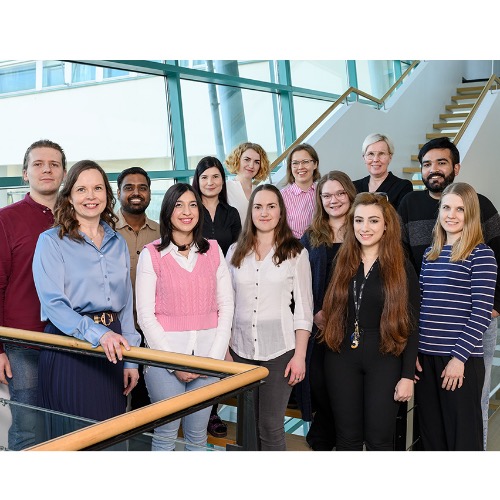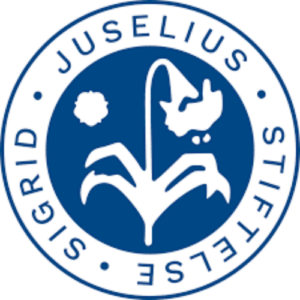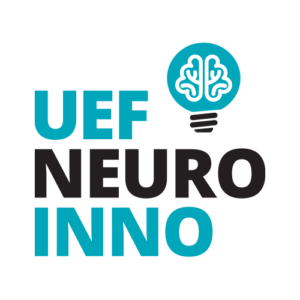
Cellular Neurobiology
Our research group is interested in exploring the effects of various environmental factors on brain health and cellular function, given that growing evidence indicates adverse brain effects of several exposures such as traffic-related air pollution. We are also interested in understanding the link of environmental factors and neurodegenerative diseases, including Alzheimer’s disease. Furthermore, we aim to discover biomarkers for mental health, and understand the effects of various environmental factors on mental health.
-
 European Commission Horizon 2020 funded project with multidiciplinary expertise of 20 partners from 11 European countries.
European Commission Horizon 2020 funded project with multidiciplinary expertise of 20 partners from 11 European countries. - Mental health is the result of the complex interplay between genetic, psychological, environmental and other factors and experiences.
- The exposome concept, referring to the totality of exposures from conception onwards, is emerging as a very promising approach in studying the role of the environment in human disease.
- The Equal-Life project will develop and utilise the exposome concept in an integrated study of the external exposome and its social aspects and of measurable internal physiological factors and link those to a child’s development and life course mental health.
- Our aim is to discover novel internal biomarkers in relation to children’s mental health. The specific focus lies in the discovery of proteomic, metabolomic and DNA-based biomarkers in bodily fluids.
- More information: https://equal-life.eu/en/project

-
- The Academy of Finland funded project to provide insight into viral impacts in the cells of the human nasal cavity.
- Since the start of the COVID-19 pandemic, neurological manifestations associated with COVID-19 have been reported in many patients.
- Exact mechanisms of COVID-19 neurological manifestations remain unknown.
- The Naso-olfactory route is one of hypothesised pathways for the virus to enter the brain. During this project we have developed a novel 3D cell model to mimic the Nose-Brain axis.
- We aim to
- Elucidate mechanisms of SARS-CoV2 entery in the human olfactory mucosa.
- Decipher neuroinvasive potential of SARS-CoV2 virus through the olfactory route
- Investigate the role of pre-exsisting or genetic predesposition to Alzheimer’s disease in SARS-CoV2 associated neurotropism.
- Our goal is to highlight the vulnerabilities associated with COVID-19 andto provide scientific insight for preventive and therapeutic interventions.

-
- A project funded by the Sigrid Juselius foundation and the Academy of Finland
- Olfactory dysfunction is observed early in several neurodegenerative disorders. The sense of smell is orchestrated by olfactory mucosal cells located at the roof top of the nasal cavity. However, it is unclear how these cells reflect key features in Alzheimer’s disease (AD) in vitro.
- We utilize the cultured olfactory mucosa (OM) cells derived from living individuals to model late-onset Alzheimer’s disease in vitro. The OM cells are relatively cost-efficient and straightforward to maintain in culture compared to the other existing cell models of AD. The cells do not require reprogramming and provide a source for neural tissue of living individuals.
- The model has various applications from drug screening purposes to finding solutions for the early detection of AD.
For more information, please see the following research articles:
Lampinen R*, Fazaludeen MF*, Avesani S, Örd T, Penttilä E, Lehtola J-M, Saari T, Hannonen S, Saveleva L, Kaartinen E, Fernández Acosta F, Cruz-Haces M, Löppönen H, Mackay-Sim A, Kaikkonen MU, Koivisto AM, Malm T, White AR, Giugno, Chew S, Kanninen KM. Single-Cell RNA-Seq Analysis of Olfactory Mucosal Cells of Alzheimer’s Disease Patients . Cells . 2022 Feb 15;11(4):676. doi: 10.3390/cells11040676.
Lampinen R, Górová V, Avesani S, Liddell J.R, Penttilä E, Závodná T, Krejčík Z, Lehtola J-M, Saari T, Kalapudas J, Hannonen S, Löppönen H, Topinka J, Koivisto A.M, White A.R, Giugno R, Kanninen K.M. Biometal Dyshomeostasis in Olfactory Mucosa of Alzheimer’s Disease Patients. International Journal of Molecular Sciences. 2022 Apr 8;23(8):4123. doi:: 10.3390/ijms23084123.


-
- A project funded by the Sigrid Juselius foundation and the Academy of Finland
- Even though aging and genetic predisposition are the major Alzheimer’s disease (AD) risk factors, there are also lifestyle factors such as physical inactivity which exert a huge impact on the development of AD.
- The main goal of this project is to provide new understanding on the beneficial mechanisms induced by regular physical exercise both in the brain and periphery, in the context of AD.
- Understanding the cellular and molecular events associated with lifestyle modulation such as regular exercise will be highly important for limiting AD-related pathology via non-pharmacological strategy and promoting healthy aging.
- Our results show that long-term voluntary exercise has beneficial against cognitive impairment developing in the 5xFAD mouse model of AD and this is associated with remodelling of glial cells – the astrocytes.
- Long-term voluntary exercise also modulates brain and peripheral iron metabolism, which is altered in AD. Our study was the first which link brain iron status with the reduction of iron regulator protein hepcidin in mice undergoing exercise. The results suggests that regular exercise regulates iron homeostasis decreasing hepcidin levels in the brain possibly via an attenuation of the interleukin-6 (IL-6)/STAT3 pathway.
For more information, please see the following research articles:
Belaya I, Kucháriková N, Górová V, Kysenius K, Hare D J, Crouch P J, Malm T, Atalay M, White A R, Liddell JR, Kanninen KM. Regular physical exercise modulates iron homeostasis in the 5xFAD mouse model of Alzheimer’s disease. Int. J. Mol. Sci. 2021, 22 (16), 8715. https://doi.org/10.3390/ijms22168715
Belaya I, Ivanova M, Sorvari A, Ilicic M, Loppi S, Koivisto H, Varricchio A, Tikkanen H, Walker FR, Atalay M, Malm T, Grubman A, Tanila H, Kanninen KM. Astrocyte remodeling in the beneficial effects of long-term voluntary exercise in Alzheimer’s disease. Journal of Neuroinflammation. 2020 Sep 15; 17: 271. https://doi.org/10.1186/s12974-020-01935-w


-
 This project is funded by the European Union’s Horizon 2020 research and innovation programme under the Marie Skłodowska-Curie grant agreement No. 101034307.
This project is funded by the European Union’s Horizon 2020 research and innovation programme under the Marie Skłodowska-Curie grant agreement No. 101034307.- Adolescence is a crucial period for developing and maintaining social and emotional habits important for mental well-being. Multiple factors like living conditions, lifestyle, genetics and the environment can be related to mental health.
- The goal of this research is to demonstrate proof of concept in being able to utilize newly discovered biomarkers for the early detection and risk prediction of mental dysfunction, especially targeting adolescents.
- This project strives to meet the challenging medical need for early identification of mental health problems, with a specific focus on adolescents.
- For more information https://sites.uef.fi/neuro-innovation/

-
- The microbiome, consisting of bacteria, fungi, archaea, protozoa, and viruses, harbours the human body, both internally and on the surface. A growing body of evidence shows that the microbiota influences physiological processes, including those of the central nervous system, and recent findings also suggest its involvement in mental health. Alzheimer’s disease is a complex disease with many factors, including the microbiome, playing a role.
- This project investigates microbiome alterations in diseased and healthy individuals, assessing microbial and metabolic signatures, and finding a possible link to lifestyle factors.
- It provides novel information about the influence of the microbiome in Alzheimer’s disease and can potentially identify new targets for early diagnosis.
Keywords
Professors
Post-doctoral Researchers
Doctoral Researchers
-

Aino-Kaisa Piironen
Doctoral ResearcherA.I. Virtanen Institute for Molecular Sciences, Faculty of Health Sciences -

Ali Shahbaz
Early Stage ResearcherA.I. Virtanen Institute for Molecular Sciences, Faculty of Health Sciences -

Kaustubh Jadhav
Doctoral ResearcherA.I. Virtanen Institute for Molecular Sciences, Faculty of Health Sciences -

Laura Mussalo
Doctoral Researcher -

Veronika Górová
Doctoral Researcher -

Aleksei Afonin
Doctoral ResearcherA.I. Virtanen Institute for Molecular Sciences, Faculty of Health Sciences -
Claire Fayad
Doctoral ResearcherA.I. Virtanen Institute for Molecular Sciences, Faculty of Health Sciences
Technicians
Project researchers
Publications
32 items-
Upregulation of Integrin beta-3 in astrocytes upon Alzheimer's disease progression in the 5xFAD mouse model
Ivanova, Mariia; Belaya, Irina; Kucháriková, Nina; de Sousa Maciel, Izaque; Saveleva, Liudmila; Alatalo, Arto; Juvonen, Ilona; Thind, Navjot; Andrès, Clarisse; Lampinen, Riikka; Chew, Sweelin; Kanninen, Katja M. 2024. Neurobiology of disease. 191: -
Adopting a child perspective for exposome research on mental health and cognitive development - Conceptualisation and opportunities
Person Waye, Kerstin; Löve, Jesper; Lercher, Peter; Dzhambov, Angel M.; Klatte, Maria; Schreckenberg, Dirk; Belke, Christin; Leist, Larisa; Ristovska, Gordana; Jeram, Sonja; Kanninen, Katja M.; Selander, Jenny; Arat, Arzu; Lachmann, Thomas; Clark, Charlotte; Botteldooren, Dick; White, Kim; Julvez, Jordi; Foraster, Maria; Kaprio, Jaakko; Bolte, Gabriele; Psyllidis, Achilleas; Gulliver, John; Boshuizen, Hendriek; Bozzon, Alessandro; Fels, Janina; Hornikx, Maarten; van den Hazel, Peter; Weber, Miri. 2023. Environmental research. 239: -
Emissions from modern engines induce distinct effects in human olfactory mucosa cells, depending on fuel and aftertreatment
Mussalo, Laura; Avesani, Simone; Shahbaz, Muhammad Ali; Zavodna, Tana; Saveleva, Liudmila; Järvinen, Anssi; Lampinen, Riikka; Belaya, Irina; Krejcik, Zdenek; Ivanova, Mariia; Hakkarainen, Henri; Kalapudas, Juho; Penttilä, Elina; Löppönen, Heikki; Koivisto, Anne M; Malm, Tarja; Topinka, Jan; Giugno, Rosalba; Aakko-Saksa, Päivi; Chew, Sweelin; Rönkkö, Topi; Jalava, Pasi; Kanninen, Katja M. 2023. Science of the total environment. 905: -
Human-derived air–liquid interface cultures decipher Alzheimer’s disease–SARS-CoV-2 crosstalk in the olfactory mucosa
Shahbaz, Muhammad Ali; Kuivanen, Suvi; Lampinen, Riikka; Mussalo, Laura; Hron, Tomáš; Závodná, Táňa; Ojha, Ravi; Krejčík, Zdeněk; Saveleva, Liudmila; Tahir, Numan Ahmad; Kalapudas, Juho; Koivisto, Anne M; Penttilä, Elina; Löppönen, Heikki; Singh, Prateek; Topinka, Jan; Vapalahti, Olli; Chew, Sweelin; Balistreri, Giuseppe; Kanninen, Katja M. 2023. Journal of neuroinflammation. 20: . 299 -
Investigating effects of exposure to ultrafine particulate matter in the brain
Saveleva, Liudmila. 2023. Publications of the University of Eastern Finland. Dissertations in Health Sciences -
Plasma proteomics discovery of mental health risk biomarkers in adolescents
de Sousa Maciel, Izaque; Piironen, Aino-Kaisa; Afonin, Alexey M; Ivanova, Mariia; Alatalo, Arto; Jadhav, Kaustubh Kishor; Julvez, Jordi; Foraster, Maria; van Kamp, Irene; Kanninen, Katja M. 2023. Nature mental health. 1: 596-605 -
Protective effect of restorative possibilities on cognitive function and mental health in children and adolescents: A scoping review including the role of physical activity
Dzhambov, Angel M; Lercher, Peter; Vincens, Natalia; Persson Waye, Kerstin; Klatte, Maria; Leist, Larisa; Lachmann, Thomas; Schreckenberg, Dirk; Belke, Christin; Ristovska, Gordana; Kanninen, Katja M; Botteldooren, Dick; Van Renterghem, Timothy; Jeram, Sonja; Selander, Jenny; Arat, Arzu; White, Kim; Julvez, Jordi; Clark, Charlotte; Foraster, Maria; van Kamp, Irene. 2023. Environmental research. 233: . 116452 -
The Interaction between Circulating Cell-Free Mitochondrial DNA and Inflammatory Cytokines in Predicting Human Mental Health Issue Risk in Adolescents: An Explorative Study
Alatalo, Arto; de Sousa Maciel, Izaque; Kucháriková, Nina; Chew, Sweelin; van Kamp, Irene; Foraster, Maria; Julvez, Jordi; Kanninen, Katja M. 2023. Biomedicines. 11: -
Transcriptomic Alterations in the Olfactory Bulb Induced by Exposure to Air Pollution: Identification of Potential Biomarkers and Insights into Olfactory System Function
Saveleva, Liudmila; Sima, Michal; Klema, Jiri; Krejčík, Zdeněk; Vartiainen, Petra; Sitnikova, Valeriia; Belaya, Irina; Malm, Tarja; Jalava, Pasi I; Rössner, Pavel; Kanninen, Katja M. 2023. Environmental toxicology and pharmacology. 104: -
Air Pollution Exposure Increases ABCB1 and ASCT1 Transporter Levels in Mouse Cortex
Puris, Elena; Saveleva, Liudmila; Górová, Veronika; Vartiainen, Petra; Kortelainen, Miika; Lamberg, Heikki; Sippula, Olli; Malm, Tarja; Jalava, Pasi I; Auriola, Seppo; Fricker, Gert; Kanninen, Katja M. 2022. Environmental toxicology and pharmacology. 96:


